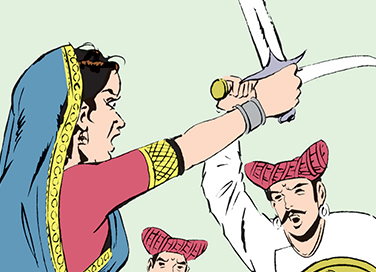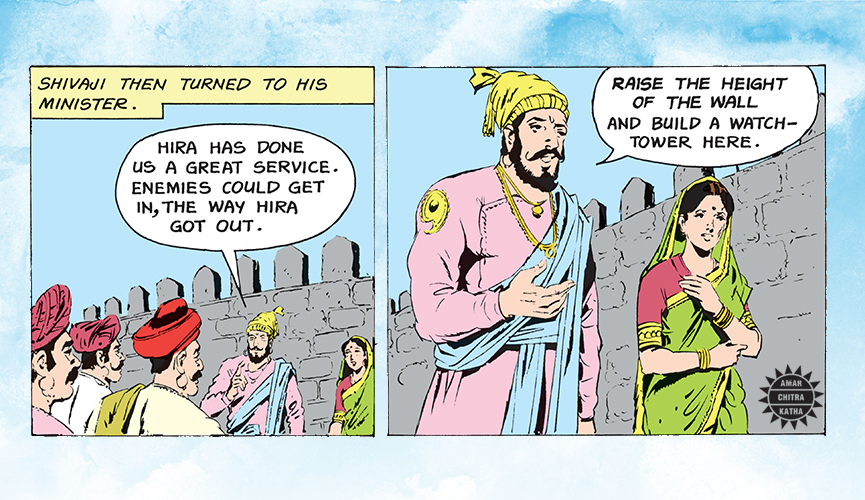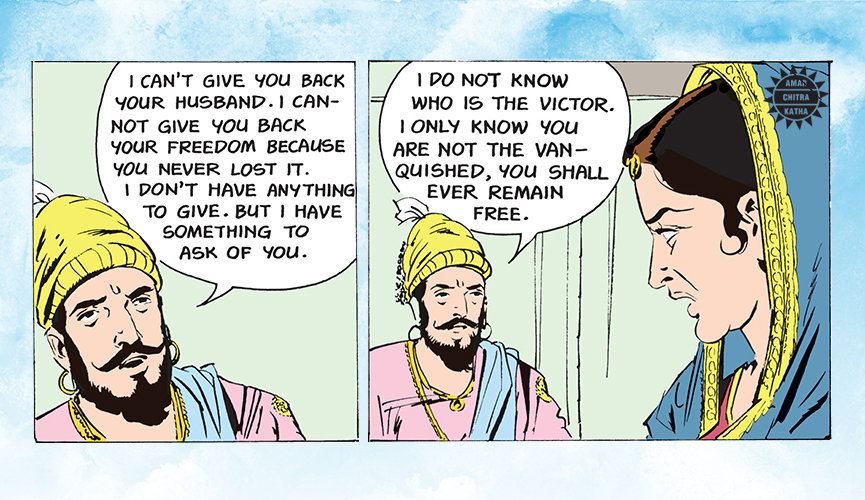Hira and Savitribai: Women Who Inspired Chhatrapati Shivaji
- August 26, 2022


Hira and Savitribai: Women Who Inspired Chhatrapati Shivaji
- August 26, 2022
By Srinidhi Murthy
Shivaji Bhonsale I, famously known as Chhatrapati Shivaji, was responsible for the strong foundation of the Maratha Empire in the 17th century. During his lifetime, he encountered some courageous men and women, who made a huge impact on him with their bravery and conviction and earned his respect and admiration. Here are the stories of two such women.
The unexpected discovery
To receive more such stories in your Inbox & WhatsApp, Please share your Email and Mobile number.
Hira was a milkmaid living in a village situated at the foothill of Raigadh, the capital of Chhatrapati Shivaji, with her son and her mother-in-law. Every day, she would go to Raigadh in the morning and the evening to sell milk to the people in the fort. After completing her work, she would return to her home by sunset to spend time with her child. One day, Hira stopped to watch the celebrations of the Kojagiri festival after her daily rounds. However, she got so immersed in the merry-making that she lost count of the hours. Soon, the main doors of the fort were closed after six in the evening and Hira realised this too late. Unfortunately, she was also stopped by the guards when she tried to leave the fort. Hira didn’t want to spend the night away from her son and so, she started looking for a way out. When she reached the eastern side of the fort, she saw a short, unguarded wall. She clambered up to the wall and slithered down the other side. When she started climbing down the hill, she realized that the path was very steep. She managed to steady herself and reached the base, which led to her village. The following morning the guards were shocked to see Hira entering the fort. Hira then told them about the unguarded eastern side.
The formation of Hira-Burz
When the guards told Shivaji about this incident, he asked Hira to show him the wall. Then, Shivaji asked her to climb down using the same route as she did last night. Though Hira clambered up to the wall, she was terrified looking at the steep slope of the hill. Surprised, Shivaji asked Hira how she performed the feat the previous night if she was so afraid. She explained to Shivaji that her mind was only occupied with the thought of her son and so, she did not mind the tough climb down. Shivaji was impressed with her bravery and determination. He asked his guards to increase the height of the wall and also built the watch tower Hira-Burz, named after Hira.

The desire for freedom
In 1677, Isha Prabhu, the Desai of Belavadi, received a message from Dadaji Raghunath Nedkar, one of Shivaji’s able commanders. Dadaji, in his message to Desai, asked him to swear allegiance to Shivaji, in exchange for his protection. Isha Prabhu politely declined the offer insisting that he would like to remain free irrespective of his respect for Shivaji. Soon, Dadaji laid siege to Belavadi but the brave soldiers of Belavadi foiled every attempt made by Dadaji, to scale the fort, for one month. Finally, a new strategy was put in place. A Maratha soldier steadily scaled the wall of the fort and set fire to the place where the hay for the horses was stacked. When the guards were distracted by the fire, the Maratha opened the gate for his soldiers to enter. Though shocked by the sudden events, Isha Prabhu and his soldiers fought so fiercely with the Maratha soldiers that they were compelled to retreat. The Marathas were driven out of the fort but Isha Prabhu died, succumbing to the injuries caused during the fight.

The unconquered sovereign
Following the sudden demise of her husband, Savitribai, the Rani of Belavadi, also known as Mallamma, decided to break the siege to get access to supplies. Inspired by her courage, the men of Belavadi accompanied her in the fight. The Rani of Belavadi fought vigorously and inspired the soldiers to do the same. Unfortunately, she was struck from behind and her sword flew off. Though she was disarmed and surrounded by the Marathas, she extracted a promise from Dadaji that he would cause no harm to the people of Belavadi. When Shivaji was informed about the fall of Belavadi, he ordered Dadaji to bring the queen before him. When she entered the camp, Shivaji humbly stood up to receive her. He bowed in reverence and said that he cannot give her her freedom back as she had never lost it and assured her that Belavadi would remain free. In the end, Shivaji requested her to forgive him for the death of her husband. Her bitterness towards him dispelled by his kind words made the Rani of Belavadi forgive Shivaji and she blessed him wholeheartedly.
To receive more such stories in your Inbox & WhatsApp, Please share your Email and Mobile number.

Comic of The Month
The Naval Journey of India Book I
This book is the first of a three-book series that takes a deep and detailed look at India's Naval History and a deep insight into the lives of our men and women in white. But any series on the Indian Navy has to start at the very beginning - exploring India's celebrated maritime history. Join our little hero, Bharat, and his grandfather, Commodore Sagar, as they sail into the deep blue waters of time. Book I of The Naval Journey of India takes a sweeping look at India's maritime endeavours, how the seas impacted us over millennia and how the oceans made us who we are.